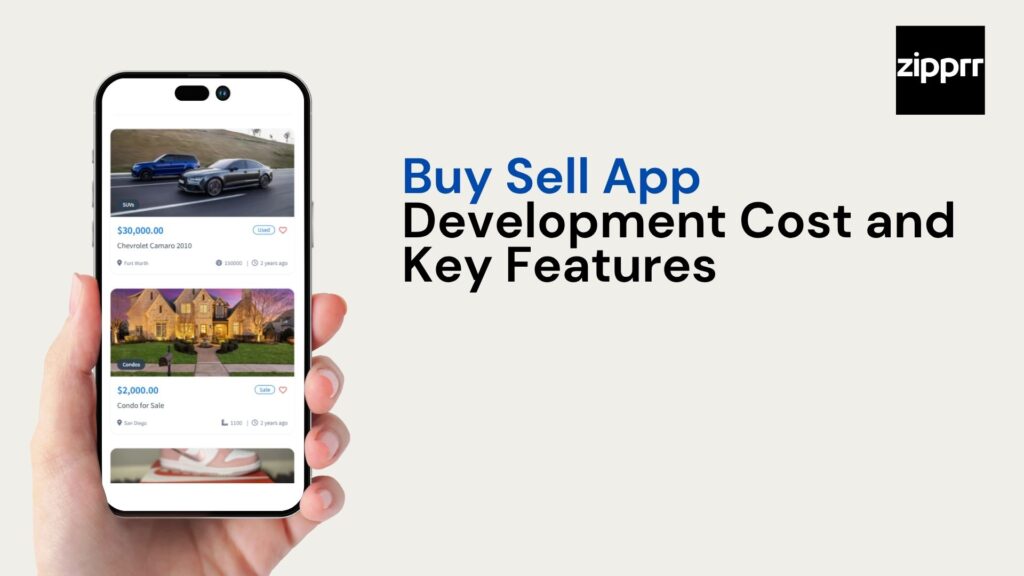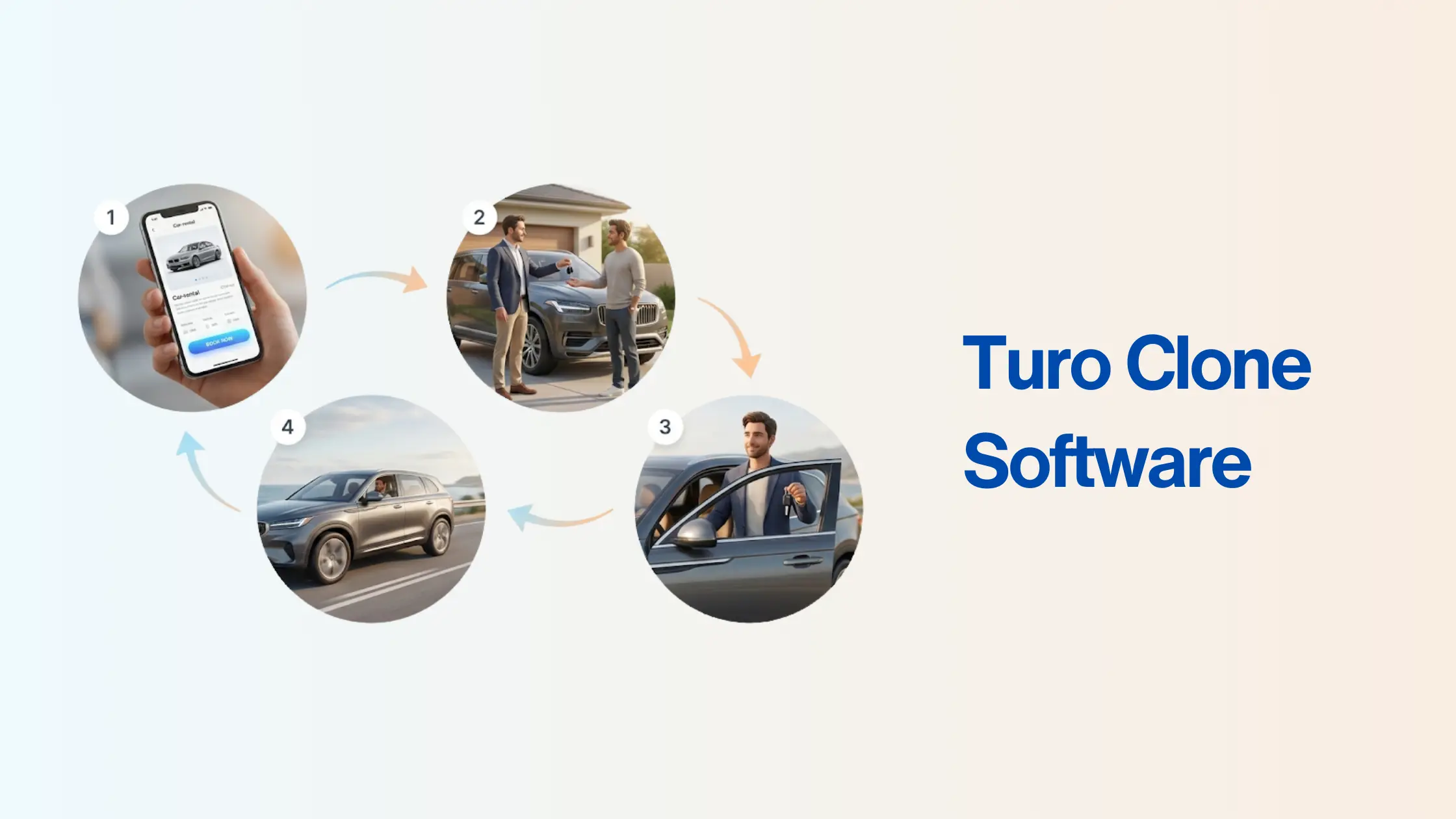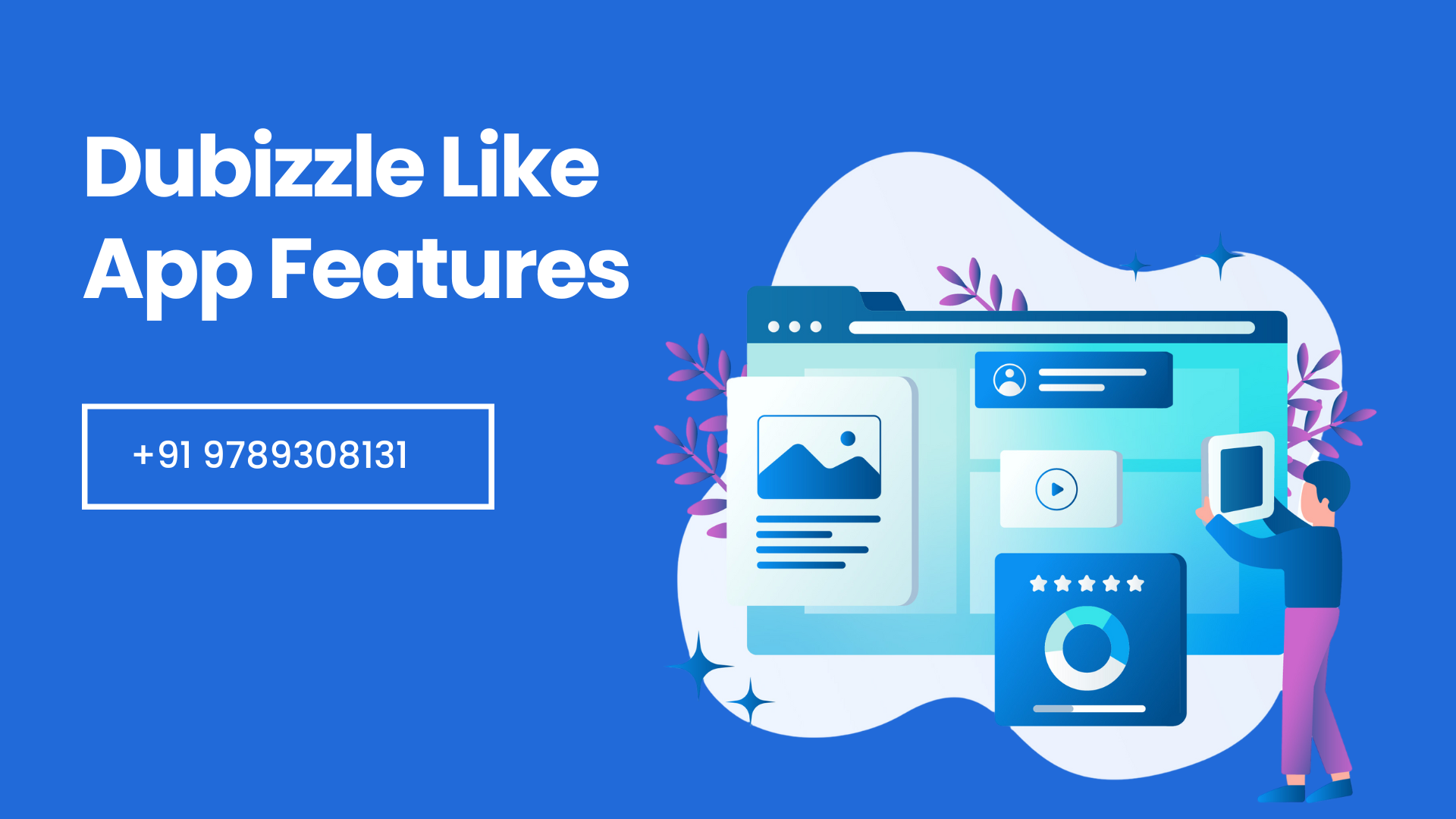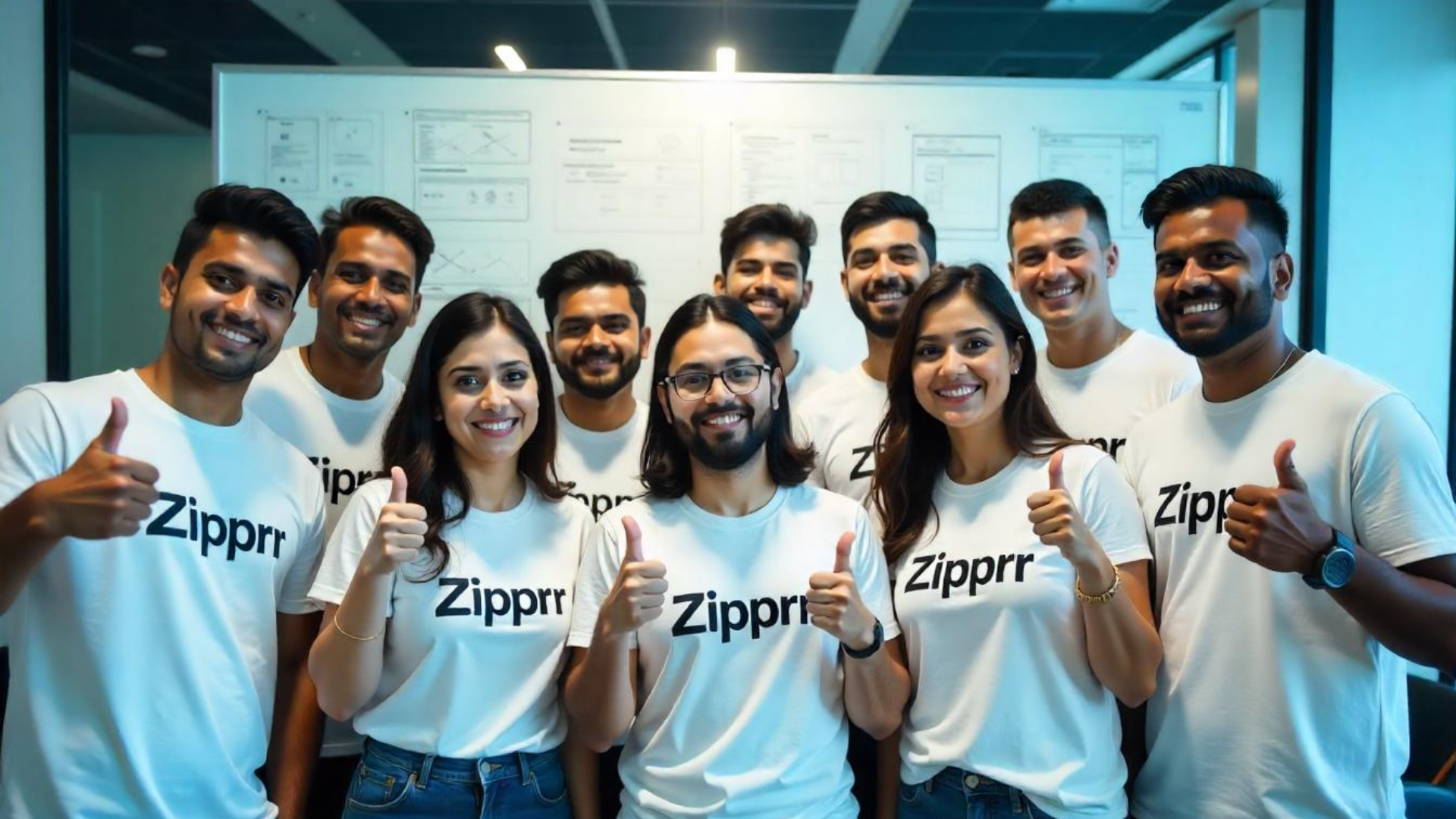The online classified ad market is booming, projected to hit $68.4 billion by 2030, growing at a 9.1% CAGR. This surge is driven by rising internet penetration, smartphone adoption, and consumer preference for online shopping. Buy-sell apps like OLX and OfferUp are revolutionizing peer-to-peer commerce, offering convenience and affordability. If you’re planning to enter this lucrative market, understanding development costs, key features, and monetization strategies is essential.
What is a Buy-Sell App?
A buy-sell app (or classified app) is an online marketplace where users can buy, sell, or trade products and services. Unlike traditional eCommerce platforms (like Amazon or eBay), these apps focus on peer-to-peer (P2P) transactions, allowing individuals and businesses to connect directly.
Key Features to Integrate into a Buy-Sell App
A successful buy-sell app must have three main panels:
User Panel (Buyers & Sellers)
Seller Panel (Advanced seller tools)
Admin Panel (Backend management)
1. User Panel Features
Easy & Quick Registration
Sign-up via email, phone, or social media (Google, Facebook).
OTP verification for security.
Personalized Recommendations
AI-driven suggestions based on user behavior & search history.
Increases engagement and sales.
Advanced Search & Filters
Search by category, price range, location, and keywords.
Filters for new/used items, discounts, and seller ratings.
In-App Messaging & Negotiation
Secure chat for price discussions and deal finalization.
Option for voice/video calls (for high-value items).
Saved Listings & Favorites
Bookmark favorite products for later purchase.
Get alerts if prices drop.
Real-Time Notifications
Alerts for new messages, offers, and order updates.
Push notifications for discounts and promotions.
Social Sharing
Share listings on WhatsApp, Instagram, Facebook.
Increases visibility and sales.
Review & Ratings System
Builds trust between buyers and sellers.
Helps users avoid scams.
2. Seller Panel Features
Manage & Update Listings
Add, edit, or delete product listings.
Bulk upload for multiple items.
Order Management
Track pending, completed, and canceled orders.
Manage shipping & delivery status.
Direct Communication with Buyers
Chat, call, or email options.
Quick response increases sales.
Secure Payment Processing
Multiple payment options (credit card, PayPal, UPI, COD).
Escrow system for secure transactions.
Analytics & Reports
Track sales performance, customer behavior.
Helps optimize pricing and promotions.
3. Admin Panel Features
Content Moderation Tools
Remove spam, fake listings, and fraudulent users.
AI-based scam detection.
Listing Management
Approve/reject listings based on guidelines.
Feature premium listings for higher visibility.
Push Notification Management
Send promotions, discounts, and updates to users.
Customizable notification schedules.
User Feedback & Support Handling
Resolve disputes between buyers and sellers.
Live chat/email support system.
Analytics & Reporting Dashboard
Track user growth, sales, and engagement.
Export reports in PDF/Excel.
Promotions & Marketing Tools
Create discount coupons, flash sales.
Run targeted ad campaigns.
Cost to Develop a Buy-Sell App
App Complexity & Estimated Costs
Basic App (MVP): $20,000 – $40,000
Core features: User registration, listings, search, chat, payments.
Single platform (iOS or Android).
Limited customization, basic UI/UX.
Mid-Level App: $50,000 – $80,000
Advanced features: AI recommendations, in-app calls, analytics.
Cross-platform (iOS + Android).
Custom UI/UX, admin dashboard.
Complex App: $100,000+
Multi-vendor marketplace, AI chatbots, escrow payments.
Advanced security (fraud detection, biometric login).
Scalable backend with cloud hosting.
Key Cost Factors
a) Platform Choice
Native Apps (iOS/Android): Higher cost ($30K–$50K per platform) but better performance.
Cross-Platform (React Native/Flutter): Saves 30–40% cost but may lack some native features.
b) UI/UX Design
Template-Based: $5,000–$10,000 (faster, cheaper).
Custom Design: $15,000+ (unique branding, better user experience).
c) Features & Integrations
Must-Haves:
User auth, listings, search, chat ($15K–$25K).
Advanced Add-Ons:
AI recommendations ($10K+), video calls ($8K), multi-language support ($5K).
d) Backend & Hosting
Basic Backend: $10,000–$20,000 (Node.js, Firebase).
Scalable Cloud Hosting: AWS/GCP costs $300–$1,000/month post-launch.
e) Development Team Rates
Freelancers: $20–$50/hour (risky for complex projects).
Agencies: $50–$150/hour (reliable, end-to-end support).
In-House Team: $100K+/year (salaries, infrastructure).
Hidden Costs
App Store Fees:
Apple Developer Account ($99/year), Google Play ($25 one-time).
Third-Party APIs:
Payment gateways (Stripe: 2.9% + $0.30/transaction), SMS/email services.
Maintenance:
15–20% of initial cost annually (updates, bug fixes).
Business Models for a Buy-Sell App
1. Premium Product Listings
This pay-for-prominence model allows sellers to boost their listings to more prominent positions in search results. By paying a small fee, sellers can ensure their products appear at the top of relevant searches, significantly increasing visibility and potential sales. This creates a win-win situation where sellers gain better exposure while the platform generates revenue. OLX’s “Spotlight” feature is a perfect example of this model in action, helping sellers stand out in crowded marketplaces.
2. Advertising & Sponsored Ads
Monetizing through advertising is particularly effective for platforms with substantial user traffic. Businesses are willing to pay for targeted ad placements that reach potential customers actively searching for products. These can include banner ads, sponsored listings, or even native advertising blended with organic results. Facebook Marketplace has successfully implemented this approach by integrating sponsored posts that appear alongside regular listings, creating a seamless yet profitable advertising experience.
3. Commission-Based Model
The transaction fee model aligns the platform’s revenue directly with successful sales. By charging a small percentage (typically 5-15%) on each completed transaction, the platform only earns when its users do. This creates a fair ecosystem where the platform’s success depends on facilitating successful deals. eBay’s fee structure is a classic example, where they charge sellers a percentage of the final sale price, incentivizing the platform to help sellers succeed.
4. Subscription Plans
Subscription-based monetization offers premium features to sellers for a recurring fee. These memberships can include benefits like unlimited listings, lower commission rates, advanced analytics, or priority customer support. OfferUp’s “Turbo” membership demonstrates this model’s effectiveness, providing value-added services that serious sellers are willing to pay for regularly. This model creates predictable, recurring revenue while helping dedicated sellers grow their businesses.
Why Choose Zipprr Classified Script?
Developing a buy-sell app from scratch can be complex and expensive. However, using a ready-made classified script like Zipprr can save time, money, and effort while ensuring a high-quality product. Here’s why Zipprr is an excellent choice:
1. Free Server Installation
No additional costs for server setup.
Hassle-free deployment with expert assistance.
2. Free App Submission
Guidance on submitting apps to the Apple App Store and Google Play Store.
Ensures compliance with platform guidelines.
3. Free Bug Support
Post-launch bug fixes to maintain smooth functionality.
Ensures a seamless user experience.
4. On-Time Support
24/7 technical assistance for any issues.
Quick resolution of critical problems.
5. 100% Source Code Ownership
Full control over customization and scalability.
No restrictions on modifying the app.
6. Native iOS & Android Apps
High-performance apps built for both platforms.
Better speed and user experience than hybrid apps.
7. Support After App Rejection
Help with resubmission if the app gets rejected.
Fixes for compliance and policy violations.
8. Free Technical Support
Ongoing assistance for updates and maintenance.
Ensures long-term app sustainability.
9. Free White Labeling
Brand the app as your own without extra costs.
Custom logo, colors, and branding options.
10. Customizable & Scalable
Adapt the app as your business grows.
Add new features without rebuilding from scratch.
Conclusion
Building a classified app is one of the smartest ways to generate income. It creates a digital marketplace where users easily buy, sell and trade goods. By developing such a platform, you solve real problems while earning revenue.
Success demands strategic planning – focus on clean design, essential features and smooth scalability. That’s why smart entrepreneurs choose proven solutions like Zipprr’s ready-made platform, saving development time to concentrate on business growth and user acquisition instead.

